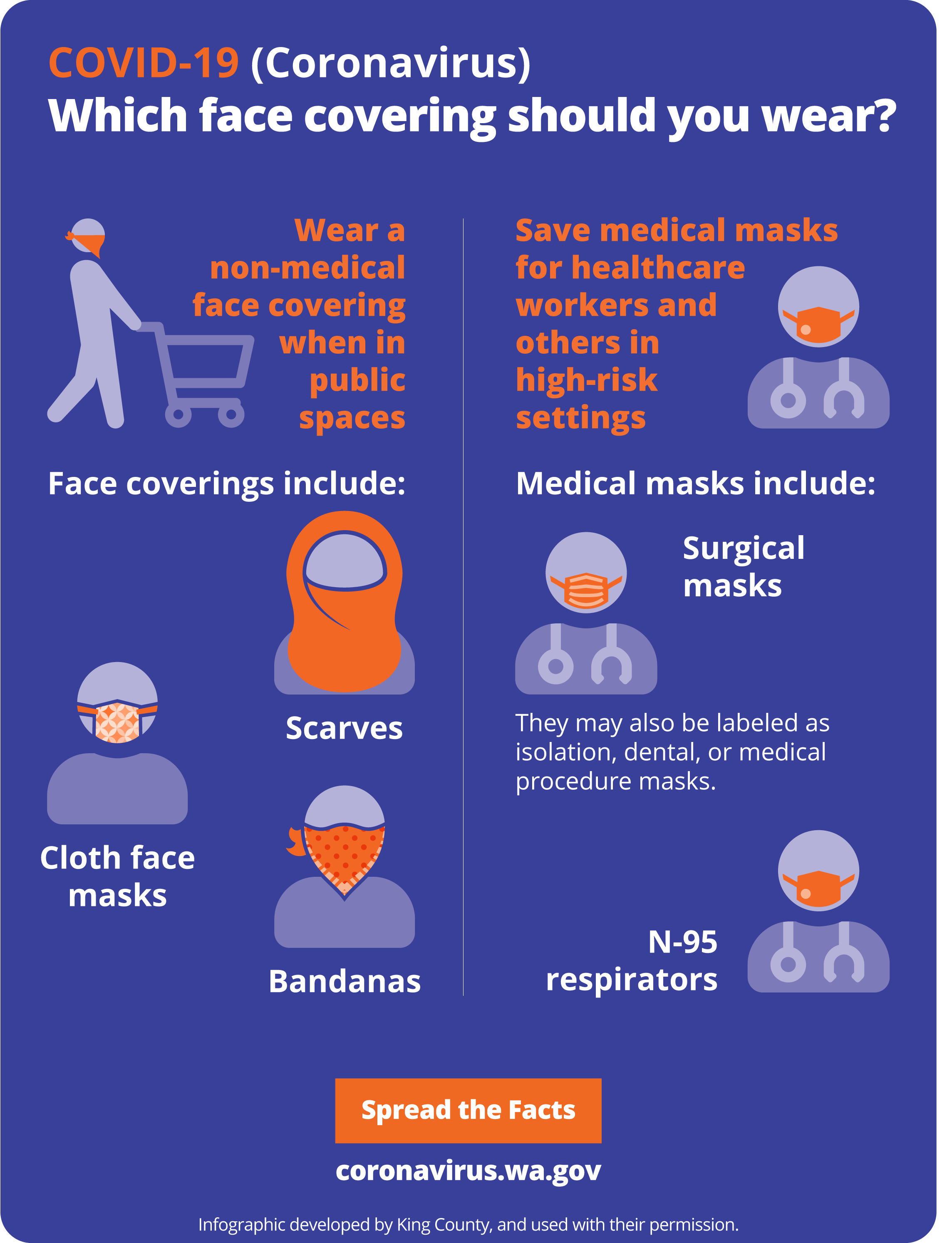Starting Friday, and for the foreseeable future, masks are required statewide

Starting Friday it becomes mandatory to wear a facemask when in public.
Gov. Jay Inslee and Secretary of Health John Wiesman announced the statewide face covering order that will take effect Friday, June 26.
Violation of this order could result in a misdemeanor criminal charge and is expected to remain in place “Until a vaccine or cure is developed”.
This order comes after the Saturday announcement of a mandatory mask proclamation for Yakima County starting this week.
According to Gov. Inslee, the order was in response to reports of increasing case counts and a potential overwhelming of the county’s health care system.
After subsequent reports of cases increasing in additional counties, the governor and Wiesman extended the face covering requirement to include the entire state of Washington.
“As necessary economic activity increases and more people are out in their communities, it is imperative that we adopt further measures to protect all of us,” Inslee said during a press conference Tuesday. “Until a vaccine or cure is developed, this is going to be one of our best defenses.”
Starting Friday, every Washingtonian must wear a facial covering when in a public space, as mandated by the public health order signed by Wiesman. This includes both indoor and outdoor public spaces.
“The science is clear that when we use face coverings, we limit the spread of droplets being passed on to others when we talk, cough or sneeze. While some of us are wearing face coverings in public, we must increase usage to best control the virus. Washington’s strategy to restart the economy and get people back to work will only be successful if, together, we act safely and follow health recommendations,” Wiesman said.
As with previous orders, there will be specific exemptions for those who may be adversely impacted by wearing a facial covering. These exemptions include those with certain medical conditions and children under the age of two, who should not wear a face covering. Children aged two, three and four are encouraged, but not required, to wear a face covering in public with the assistance and supervision of an adult.
In addition, individuals may remove face coverings under certain circumstances, including while eating or drinking at a restaurant; while communicating with a person who is Deaf or hard of hearing; and while outdoors in public areas, provided that a distance of six feet is maintained from people who are not members of their household.
You do not need to wear a cloth face covering in your home when you are only with people in your household, or when you are alone in your car.
FREQUENTLY ASKED QUESTIONS
Is wearing a face covering safe? It feels hard to breathe when I wear one. While some people have health conditions that make face coverings unsafe, they are safe for nearly all of us, even if they feel uncomfortable at first and take a while to get used to. Public health experts agree face coverings are an important tool in preventing COVID and research is increasingly suggesting widespread use is effective. Make sure your face covering covers your mouth and nose but isn’t overly tight or restrictive. Choose a soft fabric such as cotton knit or use a bandana or scarf if that feels more comfortable.
What should I do if I see someone not wearing a mask? Nothing. Some people have conditions or circumstances that would make wearing a cloth face covering difficult or dangerous. Just wear your mask and stay six feet away.
When do I not have to wear a mask? You do not need to wear a cloth face covering when you are in your own home or in your car, if you are only with people in your own household. You also do not need to wear a cloth face covering when you are exercising outdoors and you have plenty of space. It’s a good idea to keep one in your pocket, though, in case you come across other people you can’t stay six feet away from. And some people may have health conditions or circumstances that make wearing a cloth face covering difficult or dangerous.
I don’t want to make or buy a face covering. Are there other options? Cloth face coverings do not need to be complicated or expensive. Save medical masks and respirators for health care workers and others in high-risk settings. Easy alternative are to use a scarf or any breathable, washable fabric, and wrap it around your face so that a couple layers of fabric are completely covering your mouth and nose.
Read the full story on the governor’s Medium page or at the Washington Coronavirus Response page.






